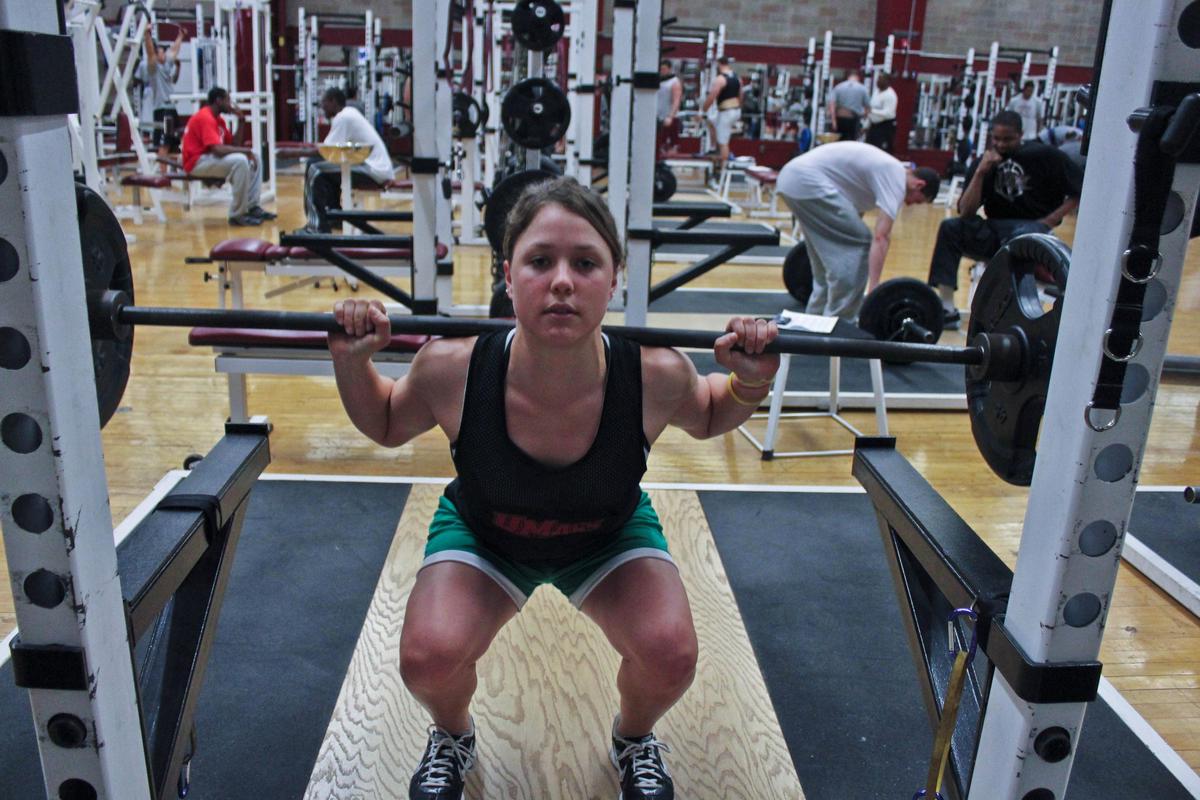Identifying Workout Goals
Decide why you're lifting. Are you aiming for muscle growth, increasing strength, or solely for well-being? Set a clear target; this will shape your entire approach.
Draft a weekly blueprint prioritizing muscle groups. If bigger arms are what you seek, allocate at least two days that hammer on that.
Intensity isn't just lifting more weight; vary such as volume, sets, reps, and rest periods. Escalating difficulty over time basically equates to continued gains.
Remember the law of rest. Muscles need recoiling time; cramming tough sessions back-to-back can be a quick ticket to burnout. Aim to have a day of rest or lighter activity in between heavy lifts.
Rotate your focus; a fine mix influences results significantly. Maybe hit legs on Monday; focus on the arms Tuesday, every week reassuring avoids monotony and promotes overall balance.
Monitor your progress every session. Jot down how much you lifted, the sets, reps, and how it felt. Recall that what gets measured – gets improved.
Know when to level up. If you make it through your sets and feel could take on more, it's time for heavier loads or additional reps next session.
Embrace variety. Your muscle fibers appreciate surprises. Instead of just pushing weights up and down, consider gyms that provide free classes, or tactically program different lifting styles or new exercises every other week. Routine is the coach driving your muscle growth – just make sure it's taking the scenic route!
Focus on form like a hawk; weights are merely tools—they build what you command them to.
Energize workouts with tenacity and rigor—your results will do the talking.
Structure Your Lifting Days
Ensure each lifting day is orchestrated to maximize engagement of designated muscle groups while allowing for adequate recovery. By dividing your workout sessions into focused themes such as an upper/lower body split, you can streamline your energy towards specific areas. For those passionate about efficiency, customized push/pull configurations could be optimal. This means that exercises designed to push muscles (like chest presses and squats) fall on one day and pulling motions (like rows and deadlifts) on another.
Such strategic planning minimizes the risk of overtraining, aiding your muscles in necessary recuperation and preparing them for increments in either the weight lifted or reps to be conducted. By compartmentalizing your strength sessions, you enhance not just performance but sustainability—ensuring that gains made don't merely peak quickly but progressively rise.
Example routines could begin with focusing on the upper body, perhaps Mondays and Thursdays providing specific attention to the chest, shoulders, and triceps. Lower body days might include Tuesdays and Fridays with a focus on legs and glutes. It's equally worthwhile to consider dedicating a day for full-core workouts, which contribute foundational strength and enhance your overall functional fitness.
During these sessions, observe how your body responds to each configuration. You may find a certain rhythm matches your physiological needs more adeptly, prompting a shift in routine structure. Allow this process some flexibility—it's a discovery journey toward peak performance and body understanding.
The routine you shape shouldn't feel like drudgery but rather an exciting venture of sculpting and invigorating your physique. Every sweat-packed session at the gym or breathed out in your home workout space crafts a little piece of the masterpiece physique you're aiming for—and every detailed plan is your blueprint to robustness.

Incorporate Active Recovery
Integrating active recovery into your weekly regimen is a strategic tack to enhance the overall fitness mosaic. On those designated 'off' days, such as Sunday in a traditional workout week, incorporate light but invigorating activities like yoga or a gentle swim. This isn't about pushing your limits but rather facilitating muscle recovery while keeping the body dynamically engaged.
Think of active recovery as your body's maintenance time; like tuning an instrument to ensure it plays perfectly every time. Yoga stretches and poses can help improve flexibility and reduce muscle stiffness, which naturally accumulate from heavy lifting sessions. The fluid motions in swimming help loosen up the muscles, providing a soothing effect while still boosting circulation—a win for your cardiovascular health!
This approach provides your muscles with tender love and care they deserve after some grueling workouts, and it also keeps the mind engaged. Maintaining a continuous physical routine can stave off the inertia that sometimes sets in on days off. The mental relaxation techniques integrated into activities like yoga can significantly enhance your mental resilience and redefine your focus when you get back to the weight room.
Active recovery days are also an opportunity to reflect on your progress and to tune your upcoming sessions based on how your body is responding. Think of these days as critical check-ins with your body:
- Are you feeling unusually sore? Maybe it's time to adjust the intensity or format of your workouts.
- How's your energy level? Perhaps your diet or sleep schedules need tweaking to better support your training goals.
By maintaining an active recovery routine, you embed a sense of routine and continuity, which is central to cultivating enduring fitness habits. It ensures that exercise, in one form or another, becomes a fixed part of your daily life—paying dividends in terms of physical health and mental well-being.
So next time you plan your week, slot in those active recovery days with the same enthusiasm and intent as your high-intensity workout days. It's a crucial balance that keeps the body guessing, growing, and glowing with health! Whether it's striking a few yoga poses or slicing through the water at your local pool, remember, even these lighter interventions are laying down the layers for your ongoing success and well-being.

Fine-Tune Your Exercise Techniques
Mastery of form in weightlifting is essential if you're aiming to increase gains while mitigating the risk of injury. It's worthwhile exploring the nuances of crucial compound exercises such as squats, deadlifts, and bench presses—these movements are the cornerstone of any effective strength training protocol.
Starting with the squat, an all-encompassing powerhouse of an exercise, it's imperative to establish a solid foundation. Position your feet shoulder-width (or slightly wider) apart, heels planted firmly. As you descend, imagine sitting back into a chair, maintaining a neutral spine and keeping the chest up. The hips should lower than the knees without letting your knees travel too far past your toes. A precise squat not only strengthens the quads, hamstrings, and glutes but also bolsters core stability.1
Progressing to the deadlift, this staple move targets nearly every major muscle group, demanding proper execution for optimal outcomes. Begin with the bar over the center of your feet—your stance slightly narrower than with squats. With knees slightly bent, hinge forward from the hips and grip the bar with a firm, shoulder-width hold. As you lift, drive through your heels, straightening your hips and legs simultaneously while keeping the weights close to your body. Failing to maintain this proximity can place undue stress on your back, reducing the effectiveness of the lift.2
Switching gears to the bench press, this quintessential upper-body exercise demands precision to avoid potential shoulder injuries. Lying back on the bench, plant your feet firmly on the ground. Grip the bar slightly wider than shoulder-width; as you lower it, elbows should form a 45-degree angle with your torso. This not only protects your shoulder joints but also optimally engages your chest muscles. The power to press the bar back up should resonate from your chest and triceps, ensuring that you derive the maximum benefit from every rep.3
The art of perfecting these techniques is a continuous learning process that involves regular re-evaluation and adjustment of your form. Incorporating video feedback or sessions with a knowledgeable coach can provide valuable insights into your lifting mechanics and help recognize areas needing improvement. As you progressively refine your skills in these foundational lifts, your body will reciprocate with increased strength and vitality.
Proper practice goes beyond mere repetition; it requires a commitment to mindfulness during each exercise—a reminder that efficiency often trumps quantity in the realm of strength training. By harmonizing mind and muscle, you set the stage not only for impressive physical transformations but also for the longevity and sustainability of your weightlifting journey. Regular revisitation and sharpening of these fundamentals ensure that your path forward is built on a solid foundation, ready to withstand and adapt to the escalating demands of advanced workouts.

- Myer GD, Kushner AM, Brent JL, et al. The back squat: A proposed assessment of functional deficits and technical factors that limit performance. Strength Cond J. 2014;36(6):4-27.
- Bird S, Barrington-Higgs B. Exploring the deadlift. Strength Cond J. 2010;32(2):46-51.
- Duffey MJ, Challis JH. Vertical and lateral forces applied to the bar during the bench press in novice lifters. J Strength Cond Res. 2011;25(9):2442-2447.
Leave a Reply